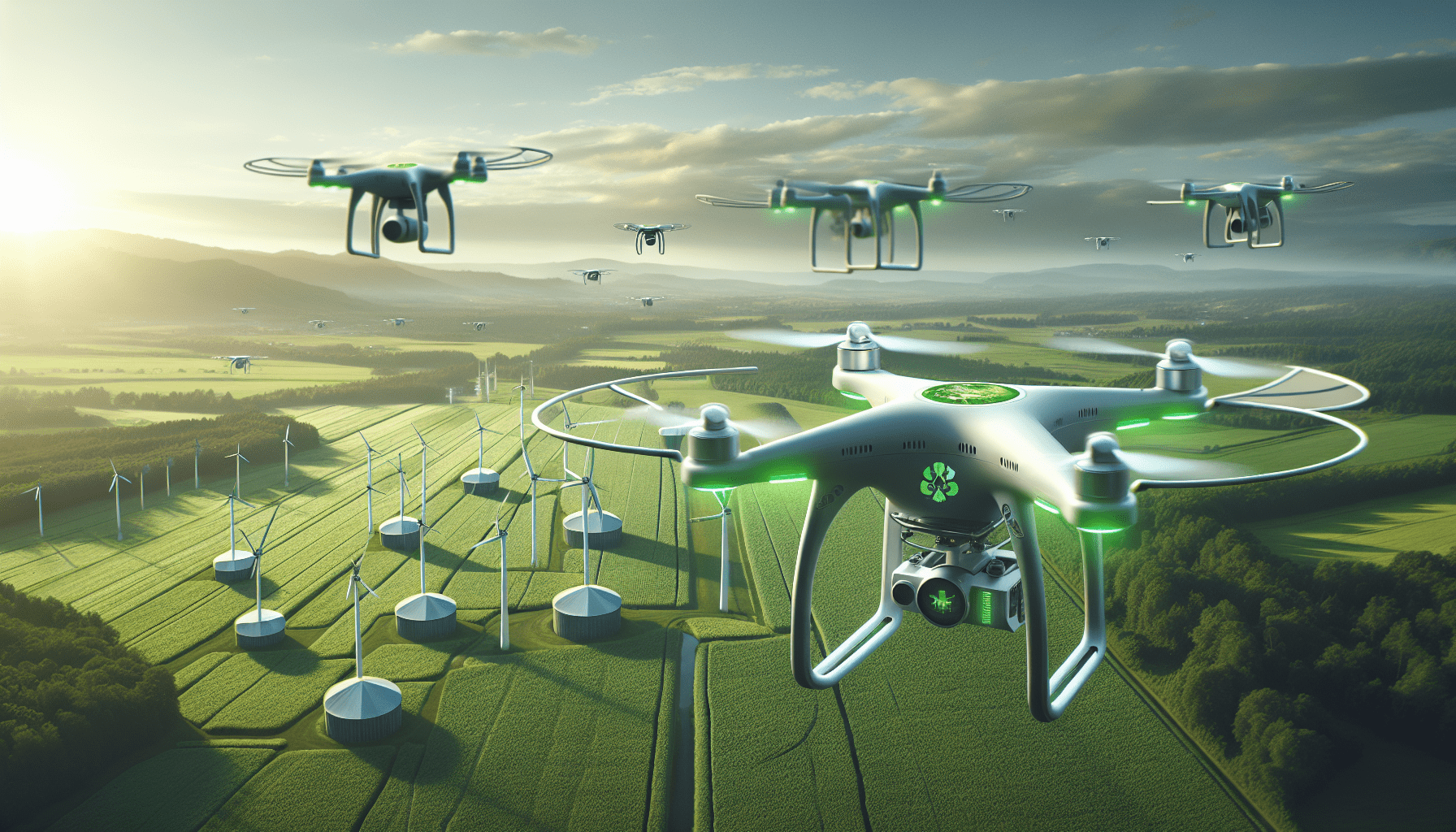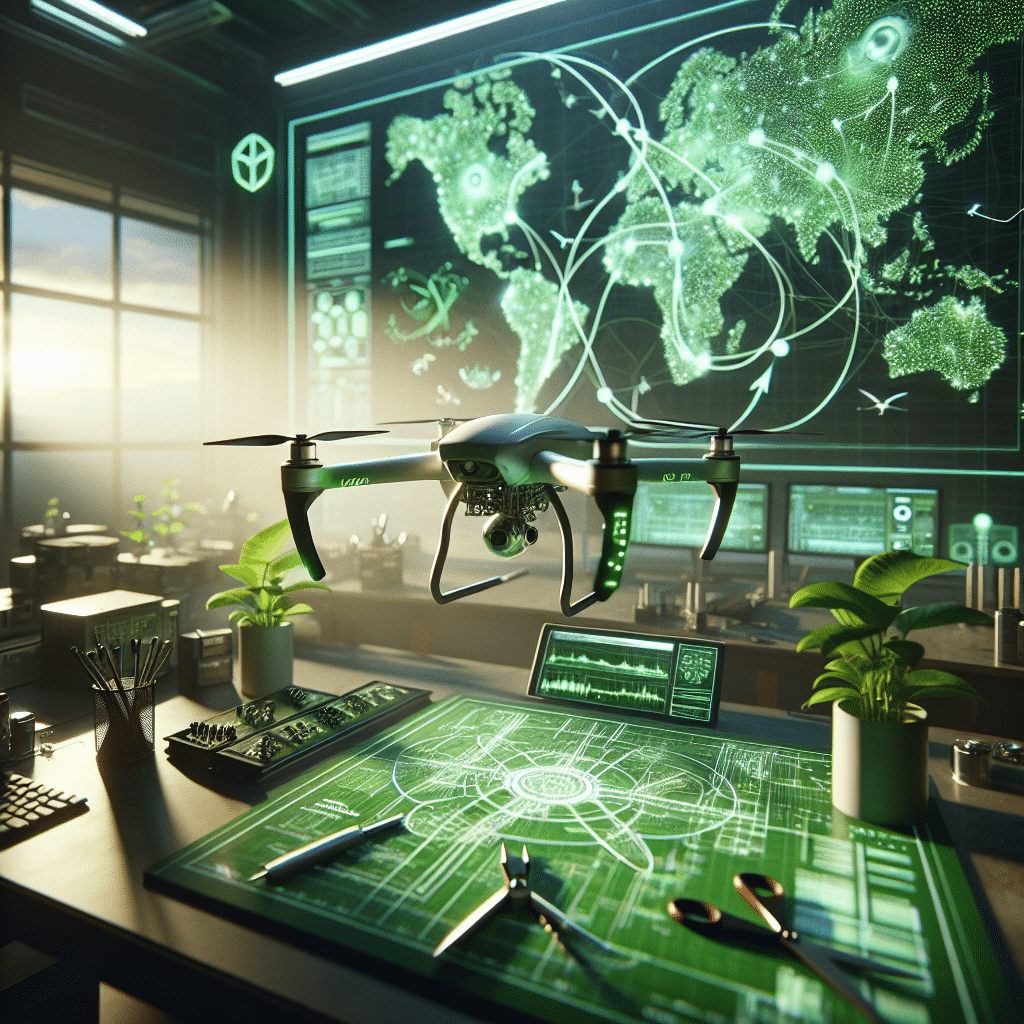The Role of Eco-friendly Drones in Promoting Sustainability
As the global population continues to expand and environmental challenges escalate, the application of technology in combating these issues has never been more necessary. Eco-friendly drones are at the forefront of this technological revolution. With their ability to access remote areas, capture data with precision, and facilitate rapid response, these drones serve as essential tools for environmental protection and resource management. By deploying eco-friendly drones, organisations can significantly reduce their carbon footprint compared to conventional methods, making strides toward a more sustainable future.

Minimising Environmental Impact
One of the primary benefits of eco-friendly drones is their reduced environmental impact. Unlike traditional aircraft that rely on fossil fuels, many eco-friendly drones operate on electric batteries, thereby minimising greenhouse gas emissions. For instance, a survey conducted on the environmental impact of aerial surveys revealed that electric drones contribute significantly less to carbon emissions when comparing similar flights undertaken by manned aircraft. This drastic reduction highlights the potential of eco-friendly drones in aiding sustainable development across various industries.
Precision Agriculture and Sustainable Farming
Eco-friendly drones are particularly transformative in the field of agriculture. Farmers can use them for precision agriculture, a practice that optimises field-level management regarding crop farming. By utilising eco-friendly drones equipped with advanced sensors, farmers can monitor crop health, distribute resources efficiently, and reduce pesticide usage, all of which lead to more sustainable practices. For example, a farmer using drones for nutrient distribution can benefit from precise application, reducing wastage and environmental degradation. Drones help deliver invaluable data that empowers farmers to make informed decisions for sustainable crop production.
Conservation Efforts Enhanced by Drone Technology
In addition to agriculture, eco-friendly drones play a crucial role in the preservation of natural habitats and wildlife conservation. These drones can be deployed in protected areas where human presence is limited, allowing environmentalists to monitor ecosystems with minimal disturbance. They capture high-resolution images and videos that aid scientists and conservationists in tracking wildlife populations, studying ecosystems, and even monitoring illegal activities such as poaching and deforestation. In essence, these drones enhance data collection efficiencies and conservation strategies, significantly supporting biodiversity preservation.
Using Eco-friendly Drones for Environmental Monitoring and Conservation
To understand how eco-friendly drones serve as vital tools for environmental monitoring, we must explore their applications in data collection and analysis. Equipped with state-of-the-art sensors and imaging technology, these drones gather real-time data on various environmental factors, including air and water quality, deforestation rates, and health of wildlife populations. The ability to monitor such data remotely not only decreases the impact on the environment but also provides researchers with crucial information for timely decision-making.
“Eco-friendly drones pave the way for a new era in environmental monitoring, helping us combat climate change effectively.”
Real-World Applications of Eco-friendly Drones
Case studies highlight the successful implementation of eco-friendly drones across different environmental monitoring projects. For instance, an initiative in Brazil employed drones to monitor the Amazon rainforest’s deforestation rates. Drones equipped with multispectral sensors provided data that otherwise would have required extensive manpower and resources to collect. This method proved to be not only faster but also more cost-effective, enabling conservationists to react promptly to identify and address issues threatening the forest’s integrity.
Drone Programs Promoting Ocean Conservation
In coastal areas, eco-friendly drones are increasingly used to monitor marine environments. They provide insights into coral reef health and fish populations while helping in tracking pollution sources. A notable programme in Australia involved deploying drones to gather data on Great Barrier Reef bleaching events. This effort was vital since timely data enabled scientists to understand and mitigate the impacts of climate change on coral ecosystems. The insights garnered from such monitoring initiatives affirm the integral role of eco-friendly drones in marine conservation.
Collaboration and Engagement in Conservation Efforts
The rise of eco-friendly drones also highlights the importance of collaboration among non-profit organisations, governmental agencies, and local communities in monitoring and conserving environmental resources. Community engagement can significantly enhance the effectiveness of drone-based conservation efforts, fostering local ownership of projects. In particular, training local residents on how to manage and operate drones empowers communities to take an active role in the protection of their environments. This collaborative approach proves effective by merging technological advantages with local knowledge and commitment.
Choosing the Best Eco-friendly Drone for Environmental Monitoring
When considering the best eco-friendly drones for environmental monitoring, several crucial factors come into play, including flight time, payload capacity, sensor compatibility, and range. Leading companies are developing drones with specific features tailored to meet the needs of environmental monitoring professionals. These features enable users to capture high-quality images, gather reliable data, and operate in varied weather conditions.
Key Features to Look For
The ideal eco-friendly drone for environmental monitoring should have a robust battery life, enabling it to conduct longer flights and cover larger areas. Additionally, payload capacity is essential for carrying essential sensors, such as thermal and multispectral cameras, which provide enhanced data collection capabilities. Advanced GPS systems and automated flight planning also streamline operations, allowing users to focus on analysis rather than logistical challenges. By investing in the right equipment, environmental professionals can greatly increase their capacity to monitor and address pressing environmental issues.
Popular Eco-Friendly Drones on the Market
Several drones stand out in the market for their focus on sustainability and capacity for environmental monitoring. Drones such as the DJI Mavic 2 Enterprise and the Parrot Anafi USA are explicitly designed to meet environmental monitoring needs while operating on electric power sources. They are equipped with advanced imaging capabilities, offering valuable data collection tools tailored for various applications including agricultural assessments, wildlife monitoring, and coastal management.
Innovative Solutions and Future Technologies
Emerging drone technologies continue to attract interest for their potential to revolutionise environmental monitoring. Notable advancements include solar-powered drones and hybrid models that combine electric and fossil fuel sources to enhance operational efficiency without increasing carbon emissions. Such innovations signal a promising direction towards achieving maximised environmental performance, while still offering high capability and flexibility in diverse applications.
The Environmental Impact of Drone Shows
As public interest in drone technology grows, so does the use of eco-friendly drones in entertainment, notably in drone light shows. These events have emerged as a captivating replacement for traditional fireworks, which often result in harmful emissions and noise pollution. Evaluating the environmental impact of drone shows reveals significant advantages, contributing to sustainability initiatives while providing awe-inspiring visual displays. These light shows use minimal energy and can be conducted without disturbing wildlife or adversely impacting air quality.
Comparing Drone Shows and Traditional Fireworks
Traditional fireworks produce smoke, noise, and debris, with their environmental effects greatly overshadowing the drama they induce. On the other hand, eco-friendly drones offer a sustainable alternative while maintaining the excitement of light displays. The drones utilised in these shows operate on electric batteries, reducing both air and noise pollution significantly. Furthermore, the efficiency of the displays can be managed well through programming, allowing for energy conservation and waste reduction.
Community Engagement Through Sustainable Entertainment
Utilising eco-friendly drones for entertainment provides an excellent platform for communities to engage in sustainability conversations. Events promoting drone spectacles allow local authorities and organisations to raise awareness about environmental issues while showcasing cutting-edge technologies. Such initiatives facilitate community participation in sustainability efforts, fostering a collective approach to environmental stewardship.
Conclusion: The Future of Eco-Friendly Drones and Sustainability
Ultimately, the development of eco-friendly drone technology signals a turning point in how we approach environmental monitoring and sustainability. These innovative machines provide unique opportunities to monitor ecosystems, advocate for conservation, and educate communities. As we look forward to future advancements in drone technology, it’s important to continue prioritising sustainability in design and operation. The adoption of eco-friendly drones will undoubtedly play a critical role in addressing the environmental challenges we face today. By embracing these technologies and understanding their contributions, we can ensure a sustainable future for generations to come.
Learn more about our eco-friendly drone models and how they can contribute to a sustainable future.
Frequently Asked Questions
How do eco-friendly drones contribute to sustainability?
- Eco-friendly drones minimize environmental impact by using sustainable materials and energy-efficient technologies, supporting conservation efforts.

